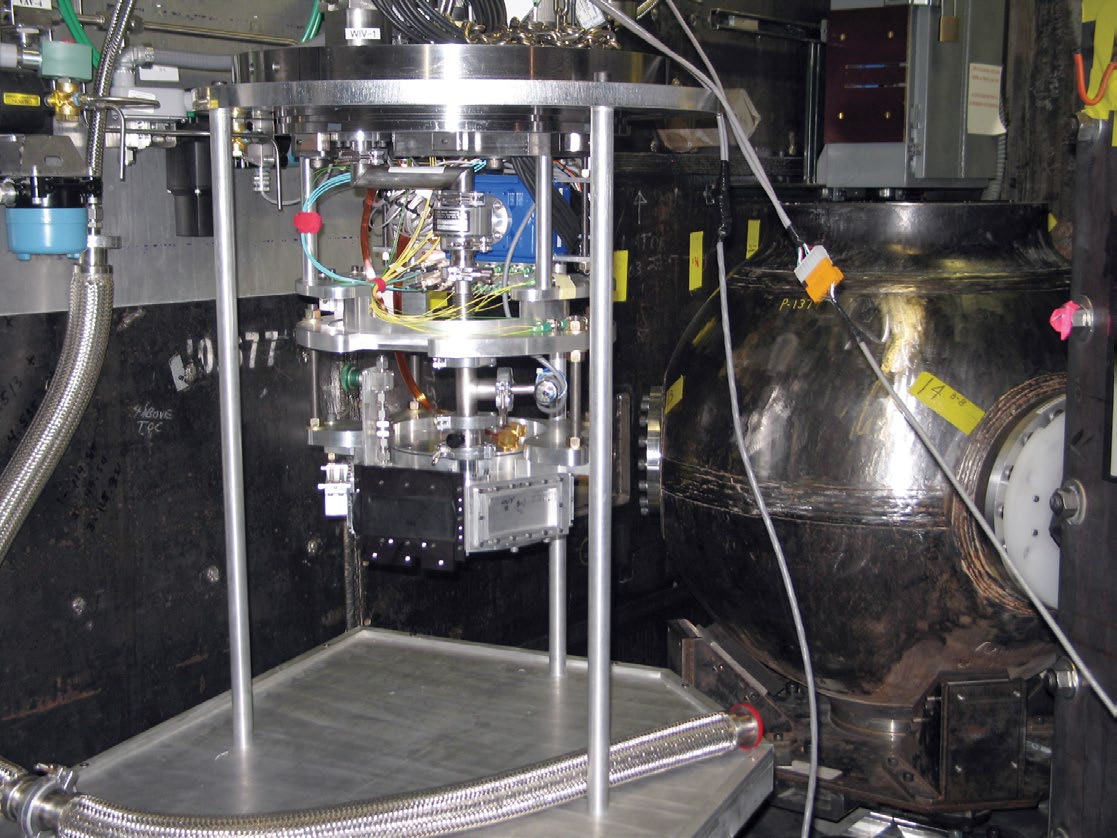Nearly 1,000 feet below the Earth’s surface, in a state-of-the-art underground laboratory – and 65 miles northwest of Las Vegas – Nevada National Security Site (NNSS) and National Laboratory scientists conduct small-scale physics experiments to ensure the safety, security, and reliability of the nation’s nuclear stockpile.
The vital national security work is a vast departure from underground, full-scale nuclear tests at the NNSS, formerly known as the Nevada Test Site, that ceased with the last test on Sept. 23, 1992.
Enter, subcritical experiments.
Backed by scientific advancement, and using cutting-edge computer and predictive modeling, scientists are able to ensure the nation’s nuclear warheads meet performance requirements, without ever creating a sustained nuclear chain reaction.
“At the NNSS, we provide a safe and secure platform for testing components that make up nuclear weapons, and subcritical experiments are a key part of that testing,” said Mark Krauss, Senior Director for Stockpile Experimentation at the NNSS. “Subcritical experiments give us the data and confidence to assure that the weapons would perform reliably.”
Today, on a small scale, subcritical physics experiments use chemical high explosives to generate extreme heat and pressures that are applied to special nuclear materials. Unlike the above- and belowground full-scale tests of the Cold War-era, the configuration and quantities of the weapons-relevant materials do not allow a self-sustaining nuclear chain reaction, or criticality, to occur.
“It turns out that the information we can extract from a single subcritical experiment – with the technology we’ve developed over the past three decades – actually surpasses in a pretty great magnitude the data we were able to collect from full-scale tests,” said Michael Hanache, NNSS Principal Scientist. “It’s about doing it in a smarter, more intelligent and a much safer way.”
The data generated from today’s experiments – conducted in partnership with scientists from Los Alamos National Laboratory and Lawrence Livermore National Laboratory and sponsored by the National Nuclear Security Administration – are used to refine the current nuclear weapons codes, which enables better predicative capability and ensures confidence in the U.S. nuclear stockpile. Much like a doctor formulates a diagnosis when you’re sick, based on the most current medical knowledge, scientists take the data from these experiments and ask questions to get to the bottom of what’s going on.
“If we want to measure velocity, for example, we can interrogate a moving surface with a laser,” said Marylesa Howard, a mathematician and Manager at the NNSS. “The light returning to the system is Doppler-shifted and we can determine the change in frequency of the reflected light, using physics and mathematics models to calculate its speed.”
By 2025, the data will reach new heights as the NNSS will be home to Scorpius, the most advanced weapons radiographic system in the world.

“Sometimes, we will want to answer questions that we don’t currently have the capability of answering,” Hanache said. “It’s about developing new systems that are able to probe new pieces of information, so that we can expand our own capabilities to answer more questions more effectively.”
Three decades after full-scale tests ended, the NNSS is readying the underground laboratory, called the U1a Complex, to house Scorpius, which will enable experiments that image special nuclear material during multiple stages of detonation, filling a gap in data collection and analysis. Scorpius is a pulsed-power accelerator that will capture a series of fast-paced X-ray images during dynamic experiments which simulate the moments preceding the initiation of a nuclear explosion. The U1a Complex is the only place in the nation where high-hazard, high-explosive testing can be conducted with plutonium and other special nuclear materials.
In recent weeks, the U1a Complex has become a hub of activity as the next phase of the U1a Complex Enhancement Project gets underway. The major, $560 million construction project will install the infrastructure that will support Scorpius and the future of experimentation at U1a.
“We have multiple testbeds coming online with plans for experiments for the next 20 years, at least,” said Rand Kelly, NNSS Principal Scientist. “Combined with our current experimental capabilities, the new testbeds will bridge several different regimes of testing capabilities.”
The work is important on a global scale, too. Subcritical experiments enable NNSS scientists to advance global security through nuclear nonproliferation, ensuring that instruments and technologies are ready and capable of monitoring nuclear testing that occurs outside the bounds of the Non-Proliferation Treaty.
“We don’t ever want to go back to that Cold War-era posture,” said Howard. “We’re here to help protect our nation and allies by making an effort of deterrence and ensure a more common ground for peace moving forward.”

